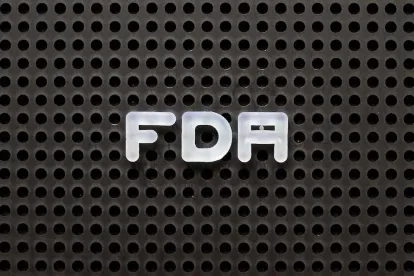Recent FDA guidance for determining and declaring the protein grams in a serving has helped muscle a class action out of federal court.
FDA’s guidance clarifies that protein nutrient content claims under 21 CFR 101.9(c)(7) can be based on either a direct or indirect methodology. Under the first method, protein content can be determined by calculating the amino acid content of the food item (which directly correlates with the amount of protein in a food). Under the second method, protein content can be determined by using the nitrogen-content method (which indirectly measures the amount of protein in a food because the more nitrogen that is present, the more protein there is).
For manufacturers using the second approach, protein content may be calculated on the basis of the factor 6.25 times the nitrogen content of the food. Further, as provided in the regulations, manufacturers using the nitrogen-content method may have to also provide a “corrected amount of protein per serving” to the nutrition label, expressed as a “Percent of Daily Value.” This disclosure takes the “actual amount of protein” from the nutrition label and adjusts it for digestibility based on the product’s “protein digestibility-corrected amino acid score.” 21 CFR 101.9(c)(7)(ii).
The import of this guidance was determinative in Nacarino v. Kashi Co. (N.D. Cal. Case No. 21-cv-07036-VC, Dkt. 43 [Feb. 9, 2022]) There, the plaintiffs alleged that Kashi’s front-of-package protein content claims were misleading because the claims were based on the indirect, nitrogen-content method and were not adjusted for protein digestibility.
In granting Kashi’s motion to dismiss the complaint with prejudice, the court acknowledged that the protein claims may be misleading in the “colloquial” sense —because a consumer might assume that eating a serving of the cereal will cause theibody to digest 11 grams of protein, where in fact it will be less. However, the court found that what matters is the “regulatory” definition of misleading. The court held that “the regulations foreclose a conclusion that the “11g” figure is misleading as that term has been used by the FDA … the regulations authorize the nitrogen-content method and do not require manufacturers to adjust statements of protein quantity for digestibility.” Consequently, the plaintiffs’ claims were preempted and, accordingly, dismissed.
Of particular interest, the court declined to follow decisions from other district courts that allowed similar protein content claims to survive motions to dismiss, noting that the specific protein content regulations permit either methodology, and that therefore no false advertising claim could be maintained. The court’s decision in Nacarino, coupled with the recent FDA guidance, provide powerful preemption defenses to false advertising claims based on protein content.




 />i
/>i

